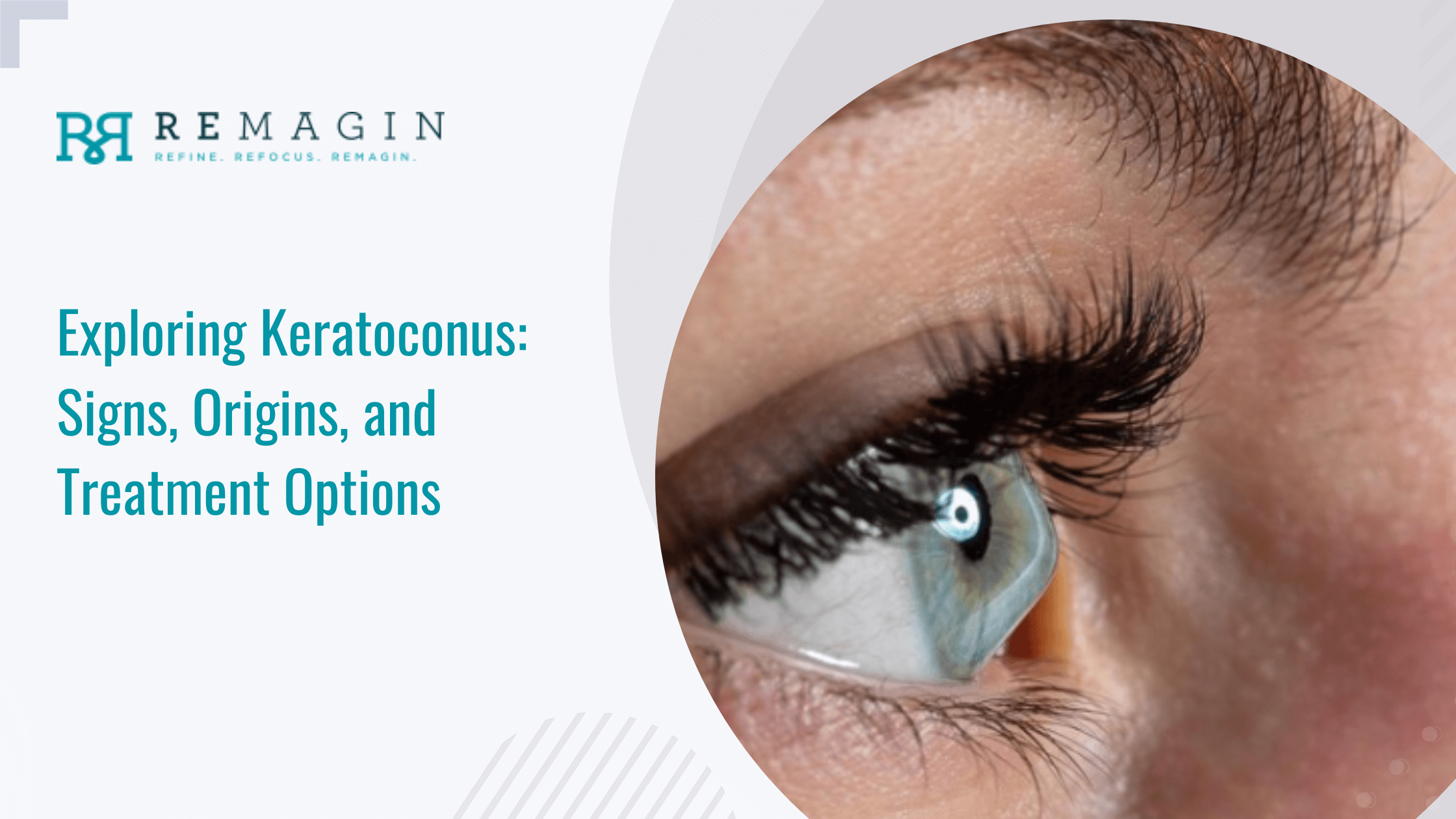



Keratoconus is a progressive eye condition characterized by thinning and irregular shape of the cornea. It is a widespread condition that affects approximately 1 in 500 people to 1 in 2000 people. The condition typically affects both eyes but can sometimes affect one eye. If left untreated, keratoconus can lead to corneal scarring, swelling, and vision loss. So, early detection and treatment are essential to slow the condition's progression and prevent long-term vision loss.
This blog discusses keratoconus, including its symptoms, causes, and treatment, helping you understand the condition and act quickly.
Keratoconus eye disease is when the cornea, which is usually round, protrudes outward into a cone shape. The cornea is the transparent, central part of the eye's front surface that protects the eye and aids in clear vision. Keratoconus is expected during the teenage years or in the 20s and 30s, but it can also develop in childhood. Rarely, a mild case of keratoconus may be diagnosed at a later stage. The corneal shape changes gradually over several years, with a faster progression observed in younger individuals.
When the cornea transforms into a cone shape, it wraps the smooth surface, causing irregular astigmatism. Unfortunately, glasses are unable to correct irregular astigmatism completely.
If the front portion of the cornea becomes steeper, the eye tends to become more nearsighted. Consequently, you may require new glasses frequently.
The exact causes of keratoconus are not known. However, experts say that environmental and genetic factors play a major role in the condition's development. While keratoconus usually develops for no obvious reason, sometimes underlying conditions and family history can cause it.
Initially, individuals may not experience any symptoms. However, as the condition advances, corneal asymmetry (thinning and irregular shape of the cornea) can occur, resulting in blurred vision and varying degrees of visual distortion.
Your eye doctor will review your medical history and symptoms. After that, they will perform an eye exam to check the overall appearance of your eyes and your eye movements.
Depending on the symptoms and severity of your condition, your eye doctor can recommend any one of the following treatments to correct your keratoconus:
If your condition is detected in the early stage, glasses or soft contact lenses may be recommended. If it aggravates, you may need hard contact lenses.
It involves exposing your affected eye to UV light to reinforce the bond between your cornea’s proteins and collagen fibers, preventing your cornea’s shape from getting steeper.
It involves inserting two crescent-shaped plastic INTACS into your cornea to flatten your cornea’s shape. However, you will still need contact lenses or glasses to correct your vision.
It involves replacing your damaged corneal tissue with corneal tissue from a donor. Though it provides better vision, it may take over a year for your vision to stabilize.
Keratoconus is a progressive condition that gradually develops for a decade or more. Regular eye exams are necessary to detect it in its earlier stages. The early stages can be easily corrected with glasses or soft contact lenses. Otherwise, you may need hard contact lenses or corneal transplant surgery. Watch out for the symptoms of keratoconus and seek prompt medical attention if you experience any changes in your vision.
At Remagin, we understand the impact of keratoconus in your daily life. That's why we are dedicated to providing the most advanced and effective treatments to help slow the progression of the condition and improve your vision. Our highly trained and experienced eye specialists are committed to providing prompt keratoconus treatment and care, ensuring the best possible outcomes. Contact us today to achieve optimal vision.